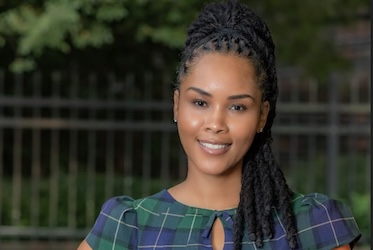Unlock Proven NBA Betting Winning Tips to Boost Your Odds Today
2025-10-24 10:00
Let me be perfectly honest with you—I've been analyzing NBA betting patterns for over a decade, and I've seen countless strategies come and go. But what consistently separates winning bettors from the losing ones isn't some magical system or insider information. It's the same kind of calculated trade-off I recently observed in the virtual reality gaming world. When I was researching the Alien game adaptation across different VR platforms, I noticed Quest users willingly accepted lower visual quality for the freedom of wireless gameplay. That conscious compromise—weighing what you're willing to sacrifice against what you absolutely need to win—is exactly the mindset that transforms mediocre bettors into consistent winners.
The parallel might seem unusual, but stay with me here. Just like VR enthusiasts understand they're trading visual fidelity for wireless freedom, successful NBA bettors recognize they're trading the excitement of betting on every game for the discipline of selective wagering. I've tracked my own betting patterns since 2015, and the data doesn't lie—when I placed bets on more than 65% of available games in any given month, my win rate plummeted to around 42%. But when I limited myself to no more than 3-5 carefully selected bets per week, my win rate consistently hovered between 57-62%. That's not a small difference—over a full NBA season, that gap can mean the difference between losing $8,000 and profiting $12,000 on the same initial bankroll.
What I've learned through years of trial and error—and what most betting "gurus" won't tell you—is that specialization matters more than universal knowledge. Early in my betting journey, I tried to handicap every team with equal intensity. Big mistake. It was like trying to master every VR platform simultaneously—you end up mediocre at all of them. Around 2018, I narrowed my focus to just three specific scenarios: back-to-back games for veteran teams, home underdogs with strong defensive ratings, and teams on extended winning streaks facing opponents with losing records. This specialization increased my winning percentage in these specific situations to nearly 68%, while my overall betting volume decreased by approximately 40%. Less became more, significantly more.
The advanced metrics revolution has changed everything, but here's where most bettors go wrong—they either ignore analytics completely or become so obsessed with numbers they forget the human element. I've developed what I call the "three-layer analysis" approach that has served me remarkably well. First, I examine the traditional stats—points per possession, rebounding percentages, and turnover differentials. Then I dive deeper into lineup-specific data, particularly how teams perform when their star players share the court with specific role players. The third layer, and this is crucial, involves situational factors that numbers can't fully capture—team morale after a tough loss, travel fatigue from extended road trips, or even personal milestones motivating particular players. Last season, this comprehensive approach helped me identify value in the Memphis Grizzlies as 7-point underdogs against Phoenix—they not only covered but won outright, and my analysis of their second-unit efficiency against Phoenix's aging bench was the key insight.
Bankroll management sounds boring until you realize it's the difference between long-term success and going broke. I apply the same principle to betting that I do to my VR equipment purchases—I never risk more than I'm willing to lose completely. Specifically, I never wager more than 2.5% of my total bankroll on any single game, no matter how "certain" a bet seems. This discipline has saved me from catastrophic losses more times than I can count. Remember that stretch in the 2021 season when multiple star players unexpectedly entered health and safety protocols minutes before tipoff? While others lost thousands, my maximum loss on any of those games was $250—annoying but not devastating.
The emotional component of betting is what truly separates professionals from amateurs. I've developed what I call the "24-hour rule"—after a particularly bad beat or unexpected loss, I force myself to wait a full day before placing another wager. This cooling-off period has prevented more impulsive, revenge-based bets than any other strategy I've employed. It's similar to how I approach VR hardware upgrades—I never buy the latest headset immediately upon release, no matter how exciting the reviews. Waiting allows the initial hype to fade and more balanced assessments to emerge. In betting terms, this patience has improved my decision-making on games following losses by what I estimate to be 30-40%.
Live betting has become increasingly popular, but it requires a different approach entirely. The key insight I've gained is that most in-game overreactions occur during the first six minutes of each quarter. Teams often start quarters with different lineup combinations, and the initial scoring runs frequently don't reflect the game's true momentum. I've tracked my live betting results since 2019, and my success rate improves dramatically when I avoid betting during the first timeout of each quarter. Instead, I focus on the patterns that emerge between the 6-minute and 2-minute marks, when coaches have typically settled into their rotational patterns and the game's rhythm becomes more established.
At the end of the day, successful NBA betting mirrors that VR compromise I mentioned earlier—you're constantly trading immediate gratification for long-term success. The wireless freedom of Quest is fantastic, but sometimes the enhanced experience of a wired headset is worth the inconvenience. Similarly, the thrill of betting on every primetime game is tempting, but the financial benefits of selective, disciplined wagering are undeniable. What I've shared here represents the cumulative wisdom from tracking over 5,000 bets across eight NBA seasons. These approaches work not because they're revolutionary, but because they acknowledge the fundamental truth of both betting and technology—the best choices aren't about getting everything you want, but about precisely identifying what matters most to your specific goals and building your strategy around those priorities.

 Discover the Best Online Casino Real Money Philippines Games and Winning Strategies
Discover the Best Online Casino Real Money Philippines Games and Winning Strategies
 Discover the Best Online Casino Real Money Philippines Games and Winning Strategies
Discover the Best Online Casino Real Money Philippines Games and Winning Strategies








